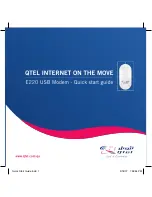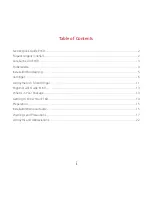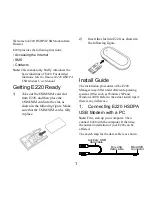
Copyright©2012–2023, Chengdu Ebyte Electronic Technology Co., Ltd.
27
[ParaTag4] indicates the maximum number of JOIN attempts, the value range of
ParaTag4: 1~255
example
AT+CJOIN=1,1,10,8 (Set JOIN parameters: enable automatic JOIN, JOIN period is
10s, maximum number of attempts is 8)
OK
+CJOIN:OK
Precautions
Need to set before Join
command
character
command
type
command format
response
DTRX
(
Send and
receive data
)
test
command
AT+DTRX=?
+DTRX:[confirm],[nbtrials],<Length>,<Pay
load>
OK
set
command
AT+DTRX=[confirm],
[nbtrials],<Length>,
<Payload>
OK+SEND:TX_LEN
OK+SENT:TX_CN
OK+SEND:TX_LEN
OK+SENT:TX_CNT
OK+RECV:TYPE,PORT,LEN,DATA
or
ERR+SEND:ERR_NUM
ERR+SENT:TX_CNT
Parameter
Description
Refer to the corresponding AT command for confirm and nbtrials,
which are only valid for this sending and optional.
Length: Indicates the number of character strings; see the access
specification for details on the maximum value; the length of bytes
allowed to be transmitted at different rates is different (see the
LoRaWan protocol for details), and 0 means sending an empty data
packet.
Payload: Hexadecimal (2 characters represent 1 number);
return value:
1. How to judge whether the data transmission is successful?
Confirm type data:
Each time a frame of data is sent, there should be a corresponding
response message. When the module times out and does not receive a
response message, it will retry again if the maximum number of times
has not been reached. If no downlink message is received until the
maximum number of times is reached, it will fail and output
ERR+SENT message. During this period, if the transmission of the
response message is received, it is considered successful, and the
OK+SEND, OK+SENT and OK+RECV messages are output.
Unconfirm type data:
No downlink response will be requested after data is sent, and
OK+SEND, OK+SENT messages will be returned at the end of each
transmission. If downlink data is received, then send OK+RECV
message.
2. Data sending status prompt
Return value
description











































